Attitudes about treating disease are undergoing a fundamental shift as the life-sciences industry faces pressure to demonstrate value.
Increasingly, there is a move from treatment to prevention, diagnostics and cure, which KPMG says is leading to the rise of new competitors.
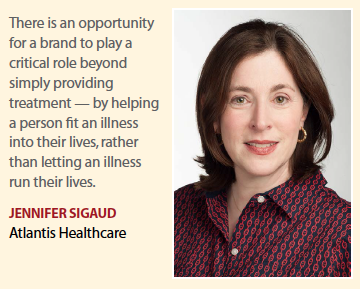 By 2030, practitioners will be able to predict the likelihood of a patient being diagnosed with a disease or health condition, and shift from treatment of symptoms to prevention measures and complete cures, rather than providing temporary respite.
By 2030, practitioners will be able to predict the likelihood of a patient being diagnosed with a disease or health condition, and shift from treatment of symptoms to prevention measures and complete cures, rather than providing temporary respite.
Three primary factors are driving this shift to prevention and cure: breakthroughs in therapy discovery and development; technology advances; and increasingly engaged and knowledgeable patients thanks to greater access to information.
Brian Doherty, executive VP, managing director, Ogilvy CommonHealth Worldwide, a WPP Health & Wellness company, says from the time of Ponce de León and his mythical search for the fountain of youth, we have been seeking ways to live longer, if not healthier.
“So while being healthy is not a new aspiration, our definition of healthy mind and body has evolved, and our paths to achieve it have changed dramatically from what they were just a few short years ago," he explains. “This endeavor for improved health and wellness is in many ways directly related to our changing environment, including rising costs of traditional healthcare, an aging population, and technological advances. No longer is healthcare an annual physical and a promise to improve one’s diet. Today healthcare is immediate, it is self-measurable, and it is shareable."
The pharmaceutical industry plays a central role in helping patients live healthier lives. A recent Consumer Reports survey stated that 55% of Americans regularly take a prescription medicine.
People are living longer, in part, because of advanced pharmaceutical treatments: there are cures for cancers that were once untreatable, biologics for autoimmune diseases, and smarter, more targeted medications that are available for other hard-to-treat diseases and conditions, says Jen Hauser, general manager, health and director of Wellness 360.
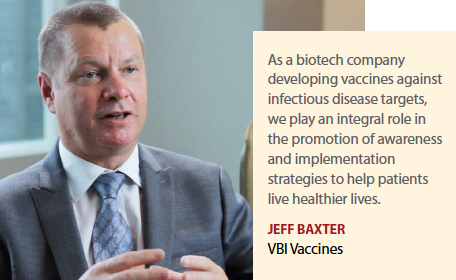 “Pharma companies are now treating diseases, both acute and chronic, in a way that is more effective, with fewer side effects, allowing people to live longer and with a higher quality of life," Ms. Hauser says. “These companies are providing other services that contribute to the well-being of patients. Whether it’s providing helpful resources to understand a disease, supporting ongoing physician education, or partnering with other health-focused companies, the most cutting-edge pharma companies are the ones that are helping patients live healthier lives, not just treat symptoms."
“Pharma companies are now treating diseases, both acute and chronic, in a way that is more effective, with fewer side effects, allowing people to live longer and with a higher quality of life," Ms. Hauser says. “These companies are providing other services that contribute to the well-being of patients. Whether it’s providing helpful resources to understand a disease, supporting ongoing physician education, or partnering with other health-focused companies, the most cutting-edge pharma companies are the ones that are helping patients live healthier lives, not just treat symptoms."
Jennifer Sigaud, managing director, Atlantis Healthcare, agrees that today’s pharma companies are going beyond simply being manufacturers and dispensers of medicines to playing an active role in helping people self-manage their condition and treatment through patient-support programs and other educational and support interventions.
“There is an emerging movement within pharma for defining care as medicine plus support, establishing and prioritizing a value-add approach to patient care," she says.
Mr. Doherty says at the same time, according to industry leaders, the modern era of blockbuster drugs is coming to a close and the majority of prescriptions are now filled by generic equivalents.
“So, just as people are redefining their relationship with health, traditional pharmaceutical companies are redefining their relationship with consumers and patients," he says. “We are moving from a healthcare pattern that is reactive to a model that is more proactive, predictive, 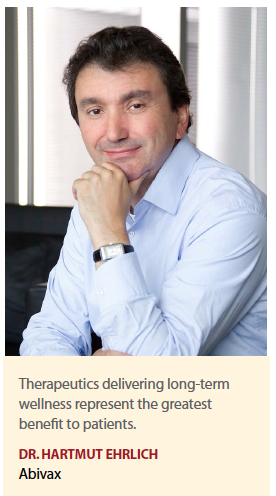 and ultimately preventive."
and ultimately preventive."
Recognizing this evolving market landscape and the need to provide services beyond customary brands, the world’s largest pharmaceutical company, Johnson & Johnson, for example, introduced its own health and wellness solutions initiative, providing information and tools to create sustainable behavior changes, ideally via early intervention.
Technological and scientific advances mean researchers can understand the root cause of a disease, detect it earlier, and intervene with targeted solutions, says Ben Wiegand, Ph.D., global head, World Without Disease Accelerator, Janssen Research & Development.
“At Janssen, we seek to realize a bold vision for the future: a world in which widespread disease is a historical artifact, where people live healthier lives promoted by technological and medical advances, and where solutions can effectively prevent, intercept, and cure diseases," Dr. Wiegand says.
Breaking with Convention
The challenge for many companies, however, is to rethink what wellness means from the point of view of the patient.
According to John Hamilton, executive VP, client service director at MicroMass Communications, the millions of dollars pharma companies provide to support patients through their treatment journey typically focus on educating patients about their disease, ensuring access, and reminding them to take their medication.
“Unfortunately, this conventional approach often fails to address the social and emotional aspects of patient care," Mr. Hamilton says. “If patients are not able to cope with anxiety — or communicate with their family and healthcare team — it is unlikely they will succeed on therapy. Simply telling a patient to ‘think positive thoughts’ or ‘share their feelings’ provides little practical value to a patient recently diagnosed with breast cancer or a COPD patient who has just been discharged from the emergency room."
What’s needed is a whole patient approach that addresses the clinical, social, and emotional aspects of living with a chronic disease or cancer.
“Built on a behavioral science foundation, this approach should incorporate evidence-based techniques such as motivational interviewing, problem solving, and cognitive behavioral techniques to help patients build coping, communication, and self-management skills," Mr. Hamilton says. “The result is that patients become able to cope with anxiety and distress, solve problems they face every day in managing their condition, and engage their healthcare team in productive two-way dialogue."
Mr. Doherty says considering that 50% of the global burden of disease is chronic illness, proactive behavior change represents a major opportunity for improved health and wellness.
“Related to behavior change, pharmaceutical companies have an opportunity to adopt so many of the technological advancements and digital healthcare solutions that are burgeoning and, most importantly, generating data," he says.
“It is this data, ‘the new oil’ as a recently coined term likes to call it, that will guide us to the preventive life of health that we now seek."
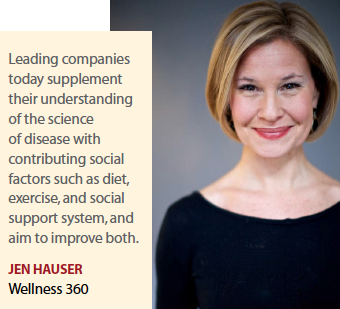 While multiple factors contribute to health — genetics, diet, microbiome, immune balance, lifestyle, and so on — the pharmaceutical industry has traditionally played the role of “last resort" after alterations in those factors led to disease, providing medicines to correct an imbalance and alter the course of a disease, says Francisco Leon, Ph.D., co-founder and chief science officer of Provention Bio.
While multiple factors contribute to health — genetics, diet, microbiome, immune balance, lifestyle, and so on — the pharmaceutical industry has traditionally played the role of “last resort" after alterations in those factors led to disease, providing medicines to correct an imbalance and alter the course of a disease, says Francisco Leon, Ph.D., co-founder and chief science officer of Provention Bio.
“The exciting new role the pharma industry can play, however, is to provide earlier solutions, intercepting and preventing disease before it happens or becomes chronic," Dr. Leon says.
A wellness approach is vital for issues such as mental health disease, which significantly impacts the lives of patients and loved ones, says Joseph Perekupka, VP sales operations, North America, Brainsway.
“Medications serve as a first-line therapy for treating patients suffering from this disease, but for many patients, medications do not adequately relieve suffering and alternative options are very limited," he says. “New innovations stemming from the pharmaceutical and medical technology industries have the potential to help patients live healthier lives by providing relief for patients with treatment-resistant mental health disorders."
Brainsway is using a non-invasive transcranial magnetic stimulation platform capable of targeting previously unreachable brain areas of treatment-resistant major depressive disorder, often in combination with current pharmaceutical therapies.
“By inventing novel treatment paradigms, bringing them to market, and making them available worldwide, pharmaceutical and medical technology companies such as Brainsway are playing major roles in helping patients live healthier lives," Mr. Perekupka says.
Ms. Sigaud adds technology advances are helping pharma to tap into new ways to enable patients to play a more active role in their own healthcare, whether it’s a patch or pill that monitors medicine delivery, or a “smart tool" that tracks progress along a treatment journey.
“By investing in or buying companies that develop high-tech medication management tools, pharma is paving the way for future innovation that complements treatment and could provide a richer experience in treatment support," she says.
Another potential new revenue stream for pharma can be found in increased partnerships with new customers, Ms. Sigaud adds.
“Pharma is uniquely suited to be able to provide evidenced-based health and wellness tools that can be leveraged by health plans, hospital systems, and large self-funded employer groups," she says. “These tools and resources have the potential to elevate quality of care for patients and customers. For example, resources could include access to dieticians or catalogs of healthy recipes with different modules for families, seniors, and adults living with various health issues."
Ms. Sigaud says another type of program could be targeted around fitness and exercise, with tailored tracks for people who have specific goals to achieve as part of their own health plans."
Ms. Sigaud says such partnerships could provide an opportunity for people to think of pharma and their health insurance provider within the area of wellness, and not just illness.
“While companies will always invest in research and development of products to treat disease, the future may see incremental investment in services to improve health in a more comprehensive way," she notes.
Improving Lives
Nawal Ouzren, CEO of Sensorion, says companies developing drug candidates need to focus on their capacity to bring clinically meaningful improvements to patients’ lives.
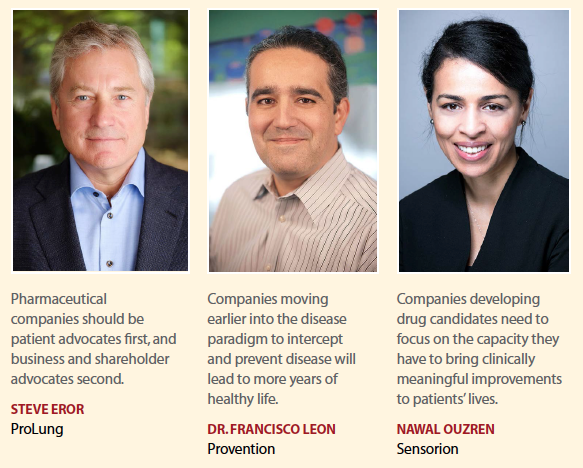 “As an example, Sensorion is developing SENS-401 for the prevention of hearing loss due to hair cell death and cisplatin-induced ototoxicity," she says. “While cisplatin is saving lives of children in particular, up to 50% of pediatric patients suffer hearing loss after receiving it and there is no current way treat this significant issue."
“As an example, Sensorion is developing SENS-401 for the prevention of hearing loss due to hair cell death and cisplatin-induced ototoxicity," she says. “While cisplatin is saving lives of children in particular, up to 50% of pediatric patients suffer hearing loss after receiving it and there is no current way treat this significant issue."
By working to prevent hearing loss through SENS-401, the objective is to provide lasting benefits to patients and to their families.
“Children are at their peak of learning and development between the ages of 3 and 6," Ms. Ouzren says. “Unfortunately, we observe that hearing loss negatively impacts their development, their learning ability in schools, and their social well-being. It would be fantastic to save children through chemotherapy and save their hearing so that they can live their lives to the fullest."
Early diagnosis is another important step in wellness for conditions such as cancer. According to Steve Eror, CEO and president of ProLung, lung cancer symptoms show very late and by that time it’s very often locally advanced metastatic and largely untreatable.
However, giving a CT screen to high-risk lung cancer patients means it’s possible to detect the disease when it’s smaller and more curable. Based on our published clinical evidence, our predictive analytic test could help lead to improving the survival rate from around 17% on average where it is today to more than 56%, Mr. Eror says.
ProLung is focused on improving the lung cancer survival rate from around 17% on average from where it is today to more than 56% while dramatically improving the health economics," Mr. Eror says. “It’s about time clinicians and patients had the power of knowledge. ProLung is giving them the power of knowledge."
Ms. Sigaud says oncology provides a lot of best practices in patient support, noting that cancer patients are typically supported in a more holistic way by their extended healthcare team, including resources provided by the manufacturer of the treatment.
“It’s an important model for healthcare, encouraging us to take a step back and help each patient develop a treatment plan to self-manage their condition, whether it’s cancer, diabetes, asthma, or another disease state," she says.
Innovation and technological advances are allowing companies to move from developing therapeutics that address symptoms toward therapeutic candidates that are prevention and cure-focused, and not just temporary treatments, says Hartmut Ehrlich, M.D., CEO of Abivax.
For its part, Abivax is developing ABX464 to reduce the HIV reservoir within infected patients and deliver long-lasting reductions in the viral load of patients.
“We hope to put HIV patients into remission or functional cure and eventually even a true cure by significantly reducing the viral reservoir of HIV, which could slow or even prevent HIV from rebounding for long periods after treatment," Dr. Ehrlich says. “Therapeutics delivering long-term wellness represent the greatest benefit to patients, and for this reason we believe that turning HIV from a now chronic disease, with current antiretroviral therapy, to a curable disease would be a true value driver for patients and the socio-economic system at large."
Vaccines generally have focused on prevention rather than cure, and VBI Vaccines is seeking to continue that trend with products in development that could lead to better infectious disease prevention.
“Our most advanced program is a third-generation hepatitis B preventive vaccine that is already available in 15 countries including Israel, and that is about to initiate a Phase III clinical program in the United States, Europe, and Canada," says VBI Vaccines’ president and CEO, Jeff Baxter. “Although a preventive HBV vaccine exists, VBI is working to improve on the current vaccine in several ways, including inducing faster protection and improved efficacy in adult and high-risk patient populations."
The company also has a preventive vaccine against cytomegalovirus (CMV) infection that is in Phase 1 trials, and if approved, would be recommended for all adolescent-aged women to prevent birth defects associated with CMV.
Mr. Baxter says there is equal commitment to raising awareness about unmet need, and ensuring the necessary measures are in place in the healthcare system to support and promote the adoption of preventive measures.
“Although congenital CMV infection is the leading cause of viral birth defects in the United States and is more common than Down syndrome and fetal alcohol syndrome, only 7% of people surveyed in the United States had heard of congenital CMV and were aware of the risks the virus poses to pregnant women and their unborn children," he says.
Dr. Leon describes vaccines for infectious diseases as the paradigm of disease prevention and Provention Bio is seeking to extend that to chronic immune disorders.
“In addition, curative therapies intercepting the course of infectious and oncologic diseases are starting to be reimbursed based on value provided to society, with creative approaches such as pay-for-success," he says. “These are just examples of how impactful innovation has been and will be reimbursed."
Prevention Focused
According to Allergan’s chief R&D officer, David Nicholson, Ph.D., some diseases currently have no treatment or cure, but may be preventable.
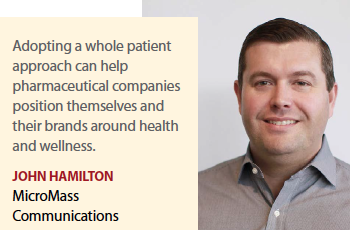 “Take for example non-alcoholic steatohepatitis or NASH, a liver disease that has surged in recent decades amid the obesity epidemic," Dr. Nicholson says. “NASH is now the fastest-growing cause of liver cancer and liver transplant. While many in the pharmaceutical industry, including Allergan, are aggressively working to develop a treatment for NASH, it’s part of our duty as global citizens to help educate patients about the possible steps to prevent the disease."
“Take for example non-alcoholic steatohepatitis or NASH, a liver disease that has surged in recent decades amid the obesity epidemic," Dr. Nicholson says. “NASH is now the fastest-growing cause of liver cancer and liver transplant. While many in the pharmaceutical industry, including Allergan, are aggressively working to develop a treatment for NASH, it’s part of our duty as global citizens to help educate patients about the possible steps to prevent the disease."
Ms. Hauser adds that the healthcare industry understands that a healthy diet, regular exercise, and practices such as mindfulness and stress reduction can contribute to health. In turn, through research and public education campaigns, pharmaceutical companies can contribute to a healthcare system that supports these practices.
“A pharmaceutical public relations campaign should bring so much more than information about a treatment: it should offer the public resources, tools and education about how to live healthy lives," she says.
The patient must always be the priority, Mr. Eror says, noting that pharmaceutical companies should be patient advocates first, and business and shareholder advocates second.
Dr. Leon says pharmaceutical companies need to be truly consumer- and patient-centric and focus on what customers really want: healthier, happier, longer lives.
“Moving earlier in the disease paradigm to intercept and prevent disease will lead to more years of healthy life, and complementing the intervention with education on diet, lifestyle, etc. will enable consumers to manage their wellness proactively," he says.
Dr. Wiegand says Janssen’s priority is always the patient, and the company is committed to tackling diseases with novel solutions.
“This will take us well beyond the boundaries of existing pharmaceutical business models, and advance the industry from the diagnosis and treatment of disease to prediction and pre-emption," he says. “The opportunity to ultimately inhibit disease and maintain wellness offers great potential for human health and healthcare systems around the world. Our efforts will include discovery and development of solutions 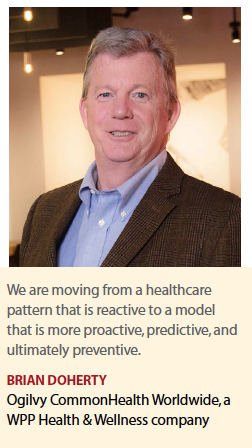 that aim to identify early risk for and track progression to disease."
that aim to identify early risk for and track progression to disease."
By focusing on better understanding the basic science that identifies risk and susceptibility for disease and then developing prevention, interception and cure solutions, Dr. Weigand says Janssen hopes to inspire individuals in the future to act sooner and change the way they view their health.
“We believe people will no longer be ‘patients,’ but active participants collaborating with healthcare professionals to intervene and stop progression to disease," he says.
Ms. Sigaud says it’s important to recognize that patients don’t live in a vacuum, and support can’t be considered in isolation. Once diagnosed, people still need to carry on their responsibilities as parents, siblings, employees, employers, caregivers, or members of communities.
She cites the example of nonadherence and the opportunity for pharma to establish an ongoing relationship with patients that naturally falls under the umbrella of health and wellness.
“Reasons for treatment nonadherence are deeply personal," she says. “For some it can be a fear of side effects, while others may not understand how their medication works to help their condition, or avoid their pills because they serve as a reminder of their disease. The discipline of health psychology informs us that we need to understand the whys behind behavior before we can change those behaviors. Successful patient support programs identify and address personal barriers to nonadherence.
“By doing so, pharma brands can create relevant engagement with patients that can ultimately impact the path of their treatment journey in many positive ways," Ms. Sigaud continues.(PV)



















